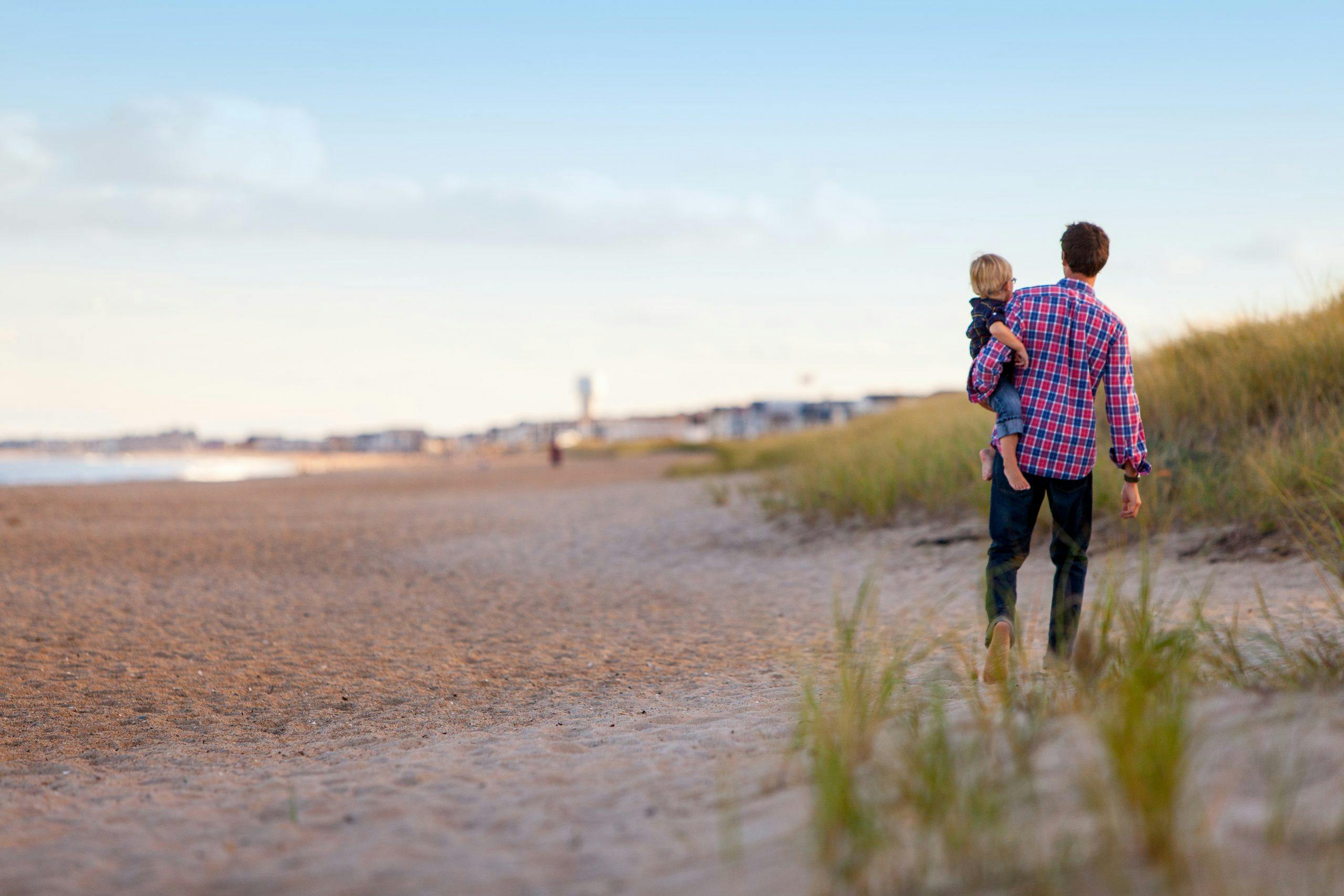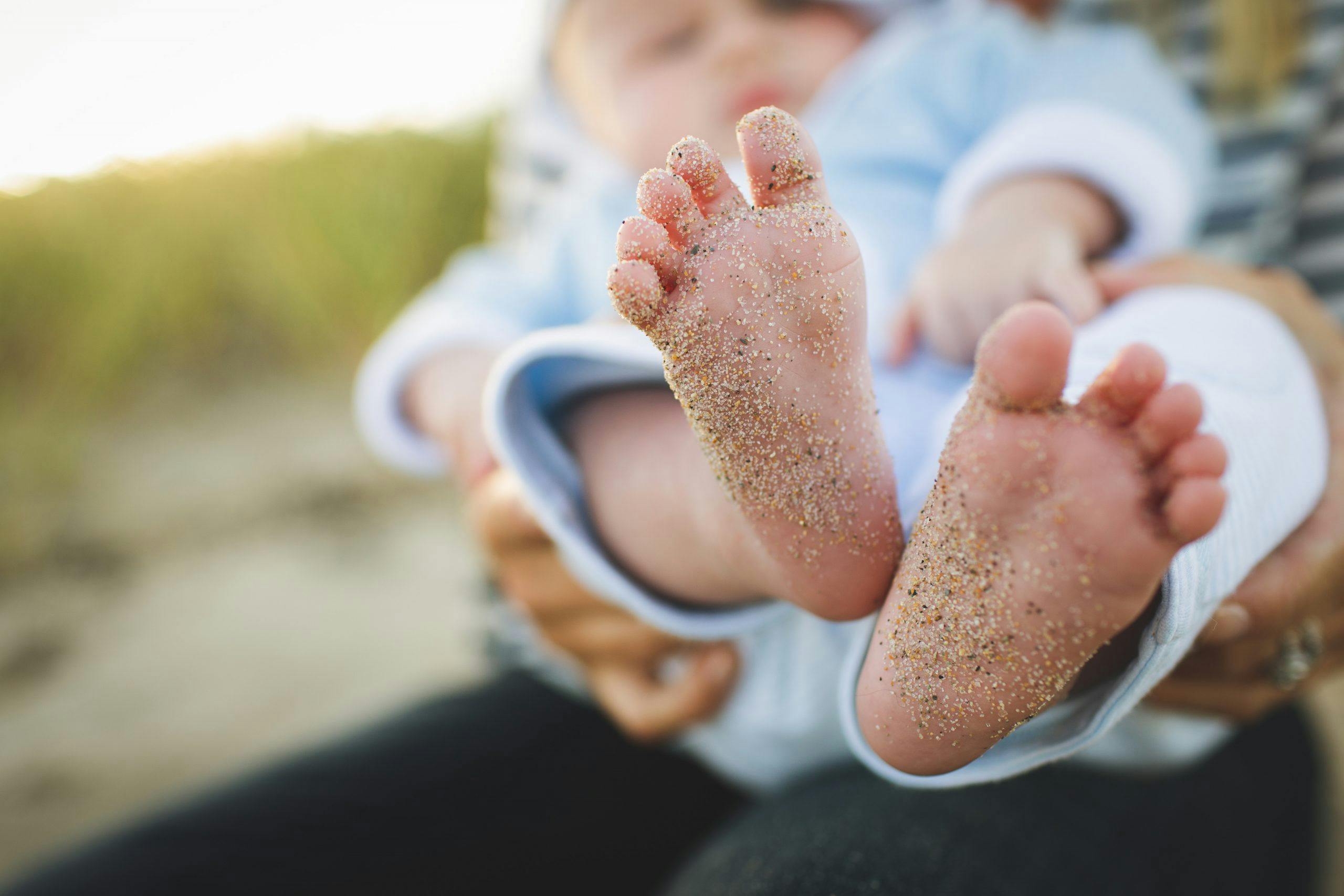Dear Sand,
We need to talk.
You held my beach umbrella tight, you made a soft ocean-side bed for me to sunbathe on, and the castles I built with you were magnificent. But now it’s time for us to part ways.
Sand is a beloved part of going to the beach… that is, until it wants to come home with you! It clings to your towels, your beach bag, and worst of all, your toes. Luckily, getting this grainy, tenacious substance off your feet is a lot easier than you think.
Here are our tips for getting sand off your feet after swimming:
1. Wash the sand off at your beach’s public shower
Many beaches have outdoor showers you can use to quickly rinse off before leaving the beach. Wash the sand off your feet and body, dry yourself off, and then quickly put on your shoes so that you don’t pick up any more gritty hitchhikers.
Rinsing off after swimming in a natural waterbody is also a good way to remove any contaminants or pollutants that may have been in the water. This will help you avoid skin irritations such as swimmers itch.
2. Use baby powder to wick away moisture (and the sand will go too)
Sand is hydrophilic, meaning that it loves water, and water loves it right back. H2O molecules and sand stick together, which is why sand can be so difficult to remove from your feet (and pretty much everything else) while they are still wet.
Sand, meet baby powder: an even more hydrophilic substance that will quickly absorb the moisture that makes sand stick to our skin, allowing it to loosen and fall off.
When you apply baby powder to the wet, sticky sand on your skin, it dries almost like magic, and you can brush it away. If you want to keep your hands clean, you can use a clean towel, cloth, or paintbrush to remove the sand and baby powder. To keep the powder from getting all over the place, you can put into a sock and then dab it on your feet to remove the moisture.

You can even use baby powder to ‘wash’ the sand from your hands before eating to keep the sand out of your sandwich. When you use this trick, make sure that you’re using the baby powder over a towel or bin so that it doesn’t end up in the ocean.
3. Let evaporation work its magic
If you’ve left the baby powder at home, you can simply wait for the water binding the sand to your feet to evaporate, and then brush the (now dry) sand off. It may take some time, but it will work just as well as it would have if you’d used baby powder.
4. Hitch a ride from the sea to a sand-free zone
If you’re trying to get the sand of a kid’s feet, this should be your go to. Carry your kid to the water’s edge, lift them by the underarms, and whisk their feet in the water to wash away the sand. Then, carry them back over the beach to an area without any sand.

5. Bring your own foot bath to the beach
When you’re packing for the beach, bring along a bin that is just big enough for your feet, as well as a large container or two of clean tap water. Place the bin on a flat grassy area, sidewalk, or parking lot. You can either fill the bin with water and rinse off your feet so that the sand sinks to the bottom, or you can pour the water onto your feet over the bin to wash the sand off.
6. Wear sand and water-friendly shoes
Open toed shoes (like flip-flops and other sandals) are perfect for the beach, since they allow sand to leave your shoes rather than becoming trapped and sticking to your feet. Waterproof shoes are especially good, because you can rinse them right along with your feet in a shower or foot bath and stay sand-free.
Sand, let’s try a long distance relationship… you stay where you are and I promise I’ll come visit you again soon!

